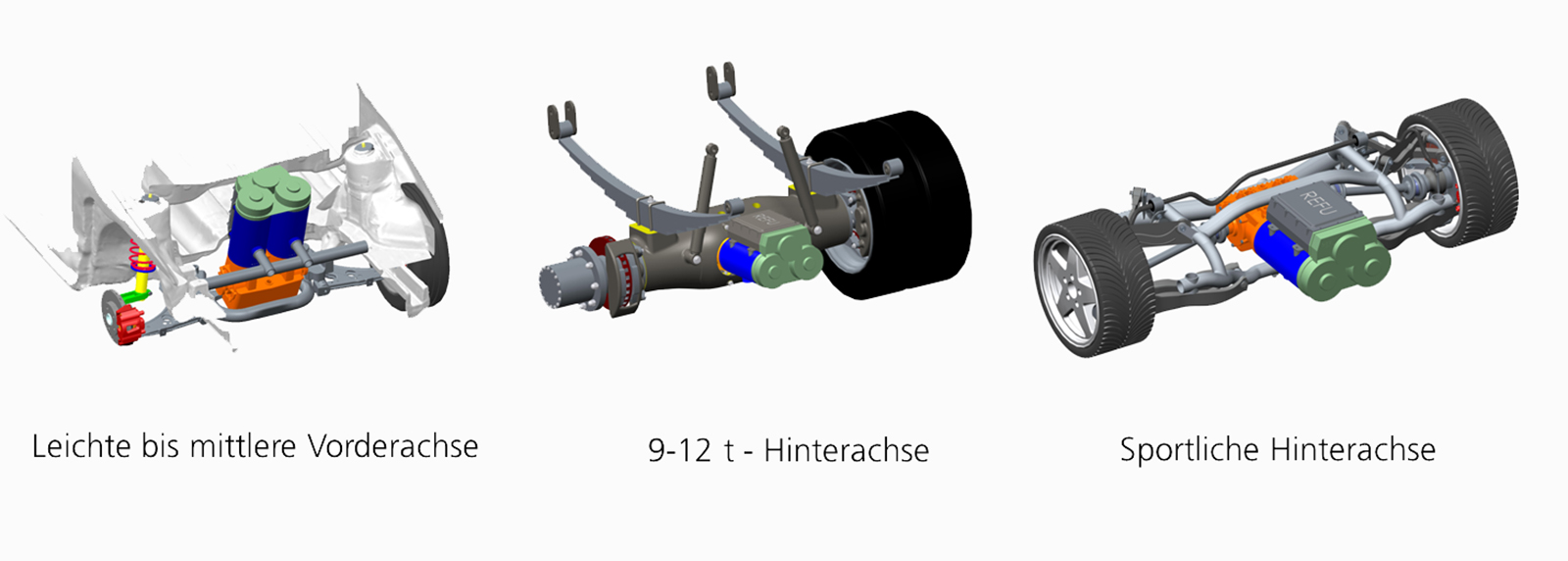Scalable electric drive for buses, trucks etc.
Although electric cars meet current trends, driving axles are still too heavy, too expensive and too large for them. To address this situation, Fraunhofer researchers joined forces with partners to design an optimized axle module for commercial vehicles. It is powerful, lightweight, compact and cost-effective.

The future belongs to electric motors, and commercial vehicles are no exception. To date, however, many attempts to develop electric motors for commercial vehicles have stalled at the prototype stage or are extremely expensive: Usually electric models cost between two and three times as much as their conventional equivalents. The reason for this is the lack of suitable technologies for series production. This is where ESKAM comes in. Short for Electric, Scalable Axle Module, the project is sponsored by the German Federal Ministry of Education and Research (BMBF). A total of eleven partners, including the Fraunhofer Institute for Machine Tools and Forming Technology IWU in Chemnitz, are developing an axle module for commercial vehicles, consisting of a motor, gearbox and power electronics. Everything fits neatly and compactly into a shared housing, which is fitted in the respective vehicle using a special frame construction also developed by the project scientists.
The axle module presents numerous advantages. For example, it has a high power density and a very high torque. For drivers, this means very fast acceleration. While the speed of most electric motors is approximately 10,000 to 15,000 rpm, the ESKAM motor achieves speeds of 20,000 rpm. “When we started on the project three years ago, we were the only ones who could obtain such high speeds,” recalls Dr. Hans Bräunlich, project manager at IWU. “In the meantime, others have been attempting similarly high speeds. But our head-start in accumulating development experience has given us a technological edge, which we intend to further extend.”
Cost-effective manufacturing through series production technologies
However, the chief advantage concerns another aspect entirely: As well as designing the axle module, the project researchers and developers simultaneously developed the required series production technologies. IWU had the lead role in this work as well as being the technological lead for the overall project. “Thanks to the innovative concept, there is great flexibility when manufacturing the modules – for small quantities and large batches alike,” says Bräunlich. Series production brings economic advantages, with reductions in production costs of up to 20 percent, according to Bräunlich.
Let’s take the gearbox that forms part of the axle module as an example. It consists of shafts and toothed wheels. Usually, shafts like these are manufactured from expensive cylinders or by means of deep-hole drilling. In both cases, the excess material is unused. By contrast, researchers at IWU have chosen new, short process chains together with methods that allow greater material efficiency. One such method is spin extrusion, which was developed by IWU. Although it also uses a block of material, here the blank is shorter than the finished shaft. “To help visualize the process, think of pottery,” explains Bräunlich. “The material is extruded during the shaping process – and pressed outward in a longitudinal direction. This allows us to use virtually all the material, cutting material costs by approximately 30 percent and reducing the overall weight of components.” Until now, there have been only initial ad-hoc approaches for this method. Now the scientists have made the technology fit for series production. The toothed wheels are also made using a different process. Instead of milling them from the material, they are now manufactured using a special forming process called gear-rolling, which was also developed at IWU. This method does not produce any metal chips, and effectively no material is lost.
All-purpose module, from small cars to buses
The flexibility of the axle module is not limited to batch sizes either, but also extends to geometry. “Because the module is scalable, we can use it in everything from small vans and municipal vehicles to buses and trucks,” says Bräunlich. With a wheel hub motor, that would not be possible. While wheel hub motors have definite advantages – such as a wider steering angle and greater responsiveness – they are not suitable for commercial vehicles, as they scarcely deliver more than 2,000 rpm. Since each wheel also requires its own power electronics, costs are higher. “Both developed versions have their own clear raison d’être and should be chosen specifically for a planned vehicle type,” says Bräunlich.
The individual modules developed by the various partners are finished and ready to go, as are the manufacturing techniques. In the next stage, the consortium is now putting the individual parts together to make a demonstrator. After that, they want to fit the axle module into a real car for testing by the end of 2015.